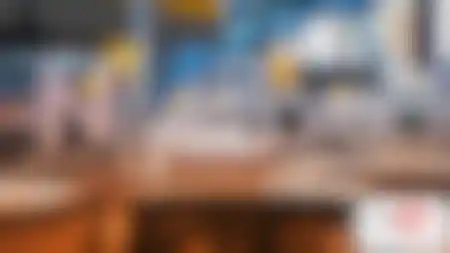
Big Machine Design Creates Hip New Show Package for "Regis and Kelly" with Cinema 4D Last fall, the creators of the nationally syndicated program "Live! with Regis and Kelly" needed a new look for the show's opener.
When they saw the spot that Big Machine Design (BMD) had done for the Promax|BDA awards and knew they'd found the right studio for the job.
Giant Octopus hired Burbank, California-based BMD for the project - a complete show package, including the main title sequence and bump-in and bump-out graphics, most of which were made using Maxon's Cinema 4D.
The goal was to create something that offered a fresh take on an urban street scene while turning the city into a character that actually interacts with Regis Philbin as he walks briskly toward Times Square where he meets Kelly Ripa, who hailed a taxi to get there. Along the way the city is alive with yellow stars, blue and yellow streamers and red arrows. Once they reach their destination, the duo is happy to see a giant animated version of the show's logo dominating the skyline above.

BMD's team had a month to complete the work and the freedom to make a lot of creative choices, says Ken Carlson, who co-founded the design house with Steve Petersen in 2003. "We thought it would be cool to have a lot of interactivity between the city and CG-generated graphics. It was great because with this project we didn't have a lot of parameters so we were able to do what we wanted to," says Carlson, who shares the position of studio creative director with Petersen.
Knowing they wouldn't have a lot of time to work with Regis and Kelly, Steve went to Manhattan before the shoot to scout locations. For expediency's sake, most scenes were shot within close proximity to each other. Everything was shot using a RED ONE digital camera and security was very tight as crowds pushed to get closer to the daytime TV stars.

Once the footage was shot (both a spring and fall version, requiring only a wardrobe change) they brought the footage into Final Cut Pro to do a rough edit and then tracked the footage using Boujou. Camera data was brought into Cinema 4D, where BMD's artists began building out all of the scenes. Compositing of finished graphics and live-action footage was done in Adobe After Effects. Polygon and object counts, at 3,800 and 1,473, respectively, per scene were relatively low compared to other projects Big Machine Design has done.
"Because most of the CG for the project involved animating geometric shapes composed against backgrounds, the work wasn't very complex," Carlson explains. Swirling colors that swoop around the city were done with Cinema 4D's Sweep Nurbs object. A wind deformer was applied to some of the shapes to give them more of a dynamic feel. Floral patterns that appear in some scenes were composited in After Effects. The patterns and other 2D effects add another layer to the look, making the fast-paced opener more visually interesting.

"It was great because Cinema 4D's built-in tools made it so easy for us to go back-and-forth between Cinema 4D and After Effects," says Carlson. "This gave us the time to try things and play around with compositing and timing without feeling like we were jeopardizing our deadline."
Artists on the team, which consisted of about 15 people, including the live-action crew, used Cinema 4D's MoGraph module to replicate objects like coffee mugs and milk cartons, which were used to give the title sequence a more morning-themed feel. "If we were required to hand animate all of those things it would have taken much longer than using MoGraph to clone them," says Carlson, who has been using Cinema 4D since 2001. "Cinema 4D really helped us streamline our animation process and it gave us time to experiment even with a tight timeframe."
Big Machine Design